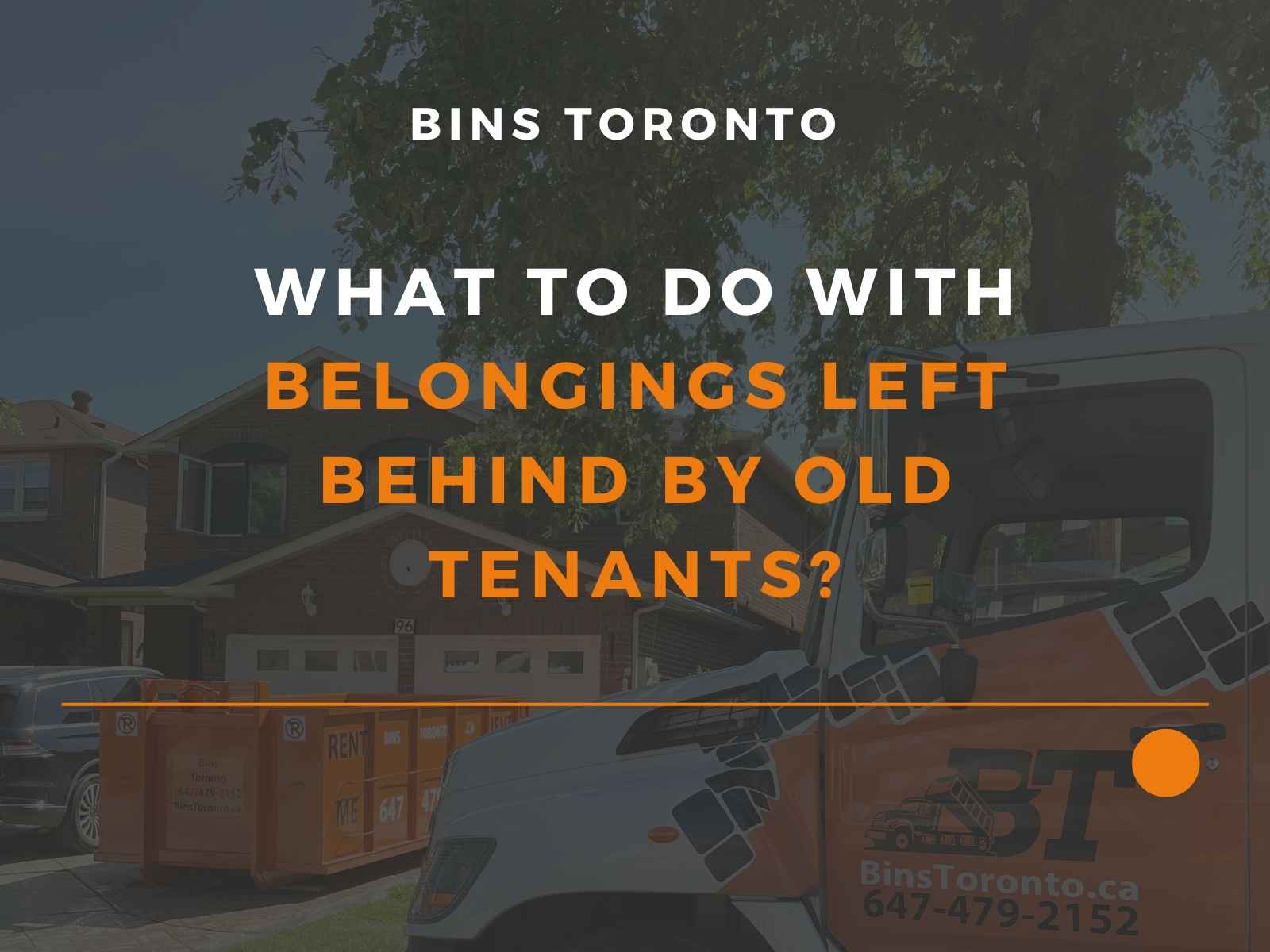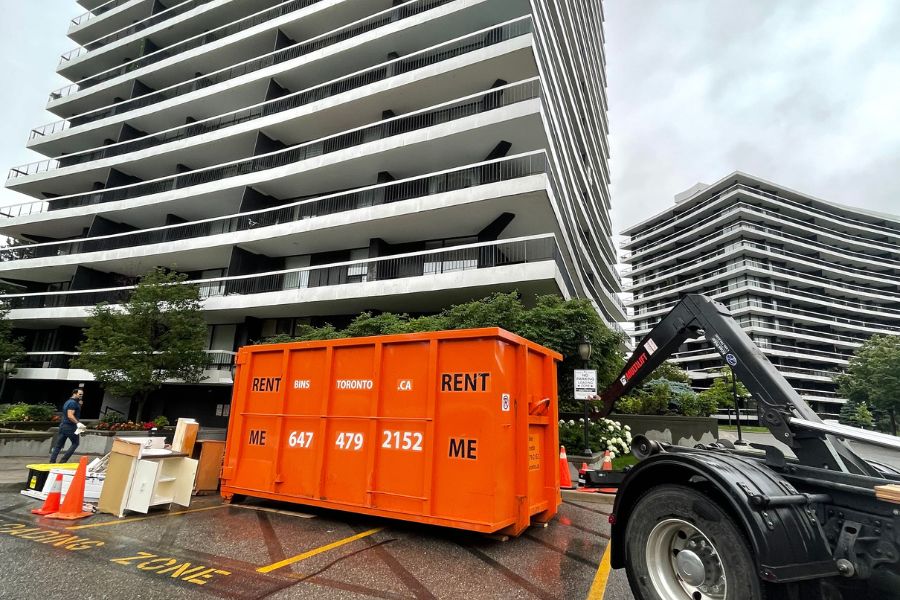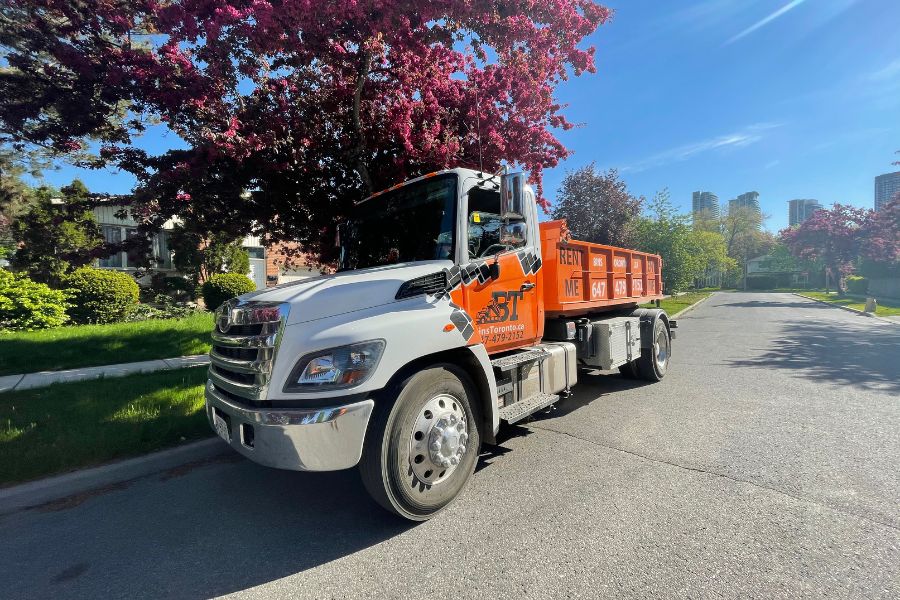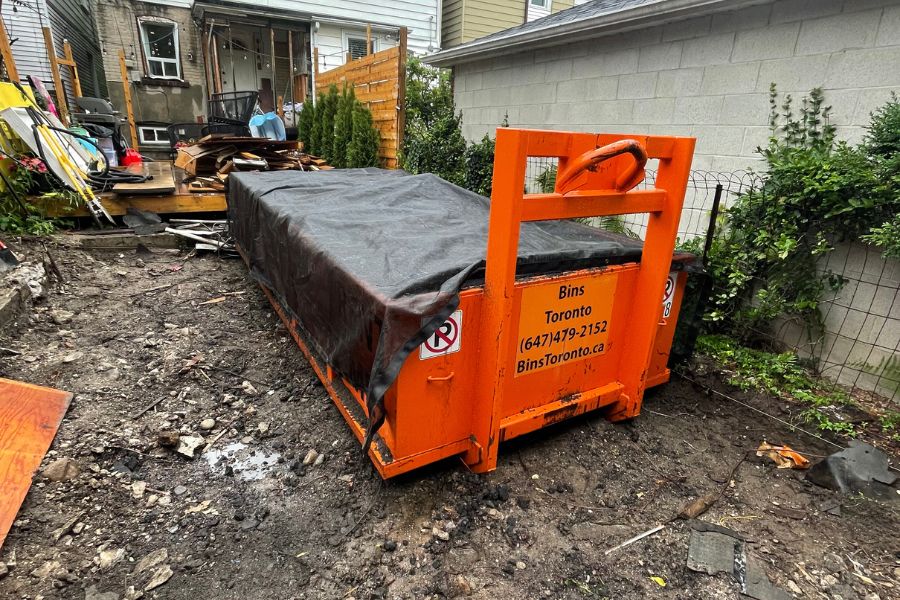

Premier Bin rental Service in Toronto and the GTA

July 17, 2025
When tenants leave behind furniture, clothing, garbage, or even appliances after moving out, it puts landlords in a difficult position. There’s the legal process to consider, a cleanup that often involves heavy lifting, and a tight timeline if you want to get the unit rent-ready again. If you’re a landlord in Toronto or the GTA, you need to know what you’re legally allowed to do with abandoned items, how to handle them efficiently, and when it’s time to bring in tenant junk removal services to help finish the job.
From condo units in Etobicoke to basement apartments in Scarborough and full homes in Mississauga, the process for dealing with left-behind belongings is governed by strict timelines and legal responsibilities. Here’s exactly what you need to know.
Whether a tenant leaves a few boxes or a room full of furniture, landlords in Ontario must follow specific rules under the Residential Tenancies Act (RTA). These rules are outlined by the Landlord and Tenant Board (LTB), and they vary based on how the tenancy ends. If the law isn’t followed, landlords risk legal complaints, delays in re-renting, or even liability.
Here’s a breakdown of the most common scenarios and what you can do in each case:
| Situation | Can the Landlord Remove Items Immediately? | Storage Required? | Special Rules or Next Steps |
| Tenant gives written notice and leaves voluntarily | Yes | No | You may dispose of items immediately |
| Tenant abandons the unit without notice | No | Yes | You must apply to the LTB to confirm abandonment before disposal |
| Tenant is evicted by sheriff after an LTB order | No | Yes, for at least 72 hours | You must store items safely and give the tenant access during this time |
It’s critical to document everything with photos, including how the unit was left and what was left behind. This protects you in case the tenant disputes the condition of their property or claims wrongful disposal.

A tenant leaving without formal notice does not always mean the unit has been legally abandoned. Even if the unit appears empty or the keys were dropped off without communication, a landlord cannot assume the tenancy has ended. In these situations, an application must be made to the Landlord and Tenant Board for a formal declaration of abandonment before any property can be removed.
In the meantime, landlords are legally required to store any left-behind items in a safe and secure place, such as a garage or storage unit, until the application is approved.
In the case of a sheriff-enforced eviction, which is only permitted with an official LTB eviction order, the rules are very specific. The landlord must store the tenant’s property for at least 72 hours, starting from the time of the eviction. This means even if it’s just garbage bags and broken furniture, you cannot throw anything out until the 3-day period has passed.
During these 72 hours, the tenant has the right to return and collect their belongings. You must allow them access, though it doesn’t need to be from inside the unit itself. Storage can be in a shed, garage, or covered area, as long as it is reasonably accessible and protected from weather or theft.
After the legal window closes, whether it’s immediate or after 72 hours, landlords can dispose of the tenant’s items. But what’s often left behind is more than just a few forgotten boxes. Landlords across Toronto and the GTA are commonly stuck with beds, broken furniture, bags of garbage, half-used cleaning products, and even food in the fridge. Tackling this kind of job efficiently and legally means having a solid plan.
Here’s a cleanup roadmap landlords in Toronto typically follow to make the process smoother and more compliant with local regulations:
Before you touch anything, take clear, timestamped photos of every room. This protects you in case a former tenant accuses you of throwing out valuables or breaching their rights. Photograph drawers as they were found, open closets, fridge contents, and anything unusual, like biohazardous materials or damage.
Once documentation is complete, begin separating items to dispose of into manageable groups:
Many landlords assume anything can be left for pickup, but Toronto has strict rules. Items like mattresses must be wrapped, electronics require special recycling procedures, and most condos won’t allow large disposal outside of scheduled times. Fines may apply for incorrect disposal, especially in high-rise buildings.
For landlords handling the job themselves, Toronto has several Drop-Off Depots where you can bring excess waste, electronics, or hazardous materials. A small fee may apply based on weight. Always check hours of operation before driving in with a load.
DIY tenant junk removal can get messy. Stock up on gloves, heavy-duty bags, contractor-grade garbage bins, dolly carts for heavy items, and air masks if there’s visible mold or strong odours. Safety should always come first, especially when the history of the space is unknown.
If the unit is badly damaged, hoarded, or full of furniture and personal belongings, doing it yourself might not be realistic. In those cases, our rental bins can help with the heavy items and make sure everything is disposed of legally and quickly. Bins Toronto also offers full-service cleanouts with flexible bin sizes, perfect for hard-to-access buildings and downtown properties.

Once everything is out, sweep, mop, disinfect, and deodorize the unit. Don’t forget the inside of appliances, baseboards, and vents. A clean unit means fewer issues at move-in and a better experience for your next tenant.
Every municipality in the GTA has slightly different rules. Here’s what landlords need to keep in mind depending on where the property is located:
If you’re clearing out an entire unit or handling repeated cleanouts for tenant transitions, waiting on city schedules doesn’t make sense. Many Toronto landlords arrange for on-site junk removal services or short-term cleanup containers to get it all handled in one go.
Tenant junk removal services take the burden off your plate entirely. They handle sorting, lifting, loading, and legal disposal, especially important if there’s a risk of fines from dumping the wrong items on the curb. These services are available across the GTA and are used by landlords, property managers, and real estate investors dealing with:
Some services offer same-day cleanup, which can be critical when you’re working on a tight schedule to show and re-rent the unit.

Yes, if the tenant does not collect their items within the legal window, and you’re not obligated to store them anymore, you’re legally allowed to sell the remaining property. You can keep the proceeds or apply them to the tenant’s unpaid rent or damage charges. However, if the items are clearly of little value, most landlords simply dispose of them.
If you frequently manage tenant turnovers in Toronto or the GTA, having a consistent cleanout plan makes a huge difference. Many landlords now:
Tenant junk removal in Toronto isn’t just about tossing things out, it’s about navigating legal obligations, managing waste responsibly, and protecting your investment. Whether you’re a landlord dealing with your first post-move-out mess or a seasoned investor flipping units across the GTA, having a cleanup strategy matters. From understanding Ontario’s rules to knowing when to call for help, these are the steps that make your next transition smoother, faster, and stress-free.
For help with fast, professional, and respectful tenant junk removal, we’re always ready to support your next cleanout. Our services are trusted by landlords across Toronto, Mississauga, Scarborough, North York, and beyond.
Let us help you get your unit ready for its next tenant, without the stress of doing it all yourself.